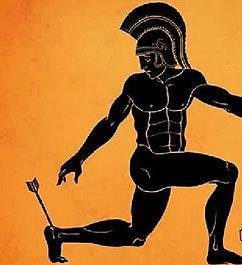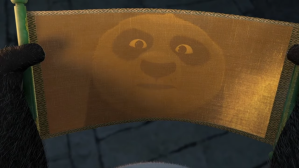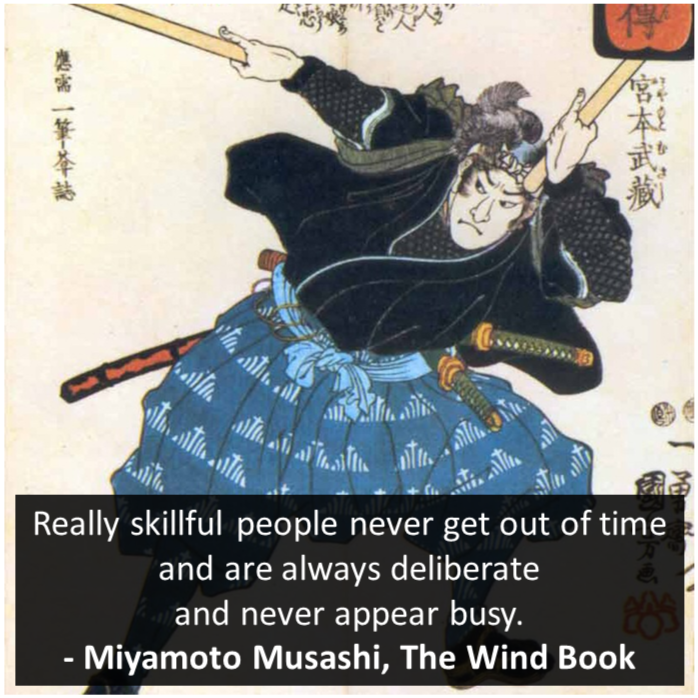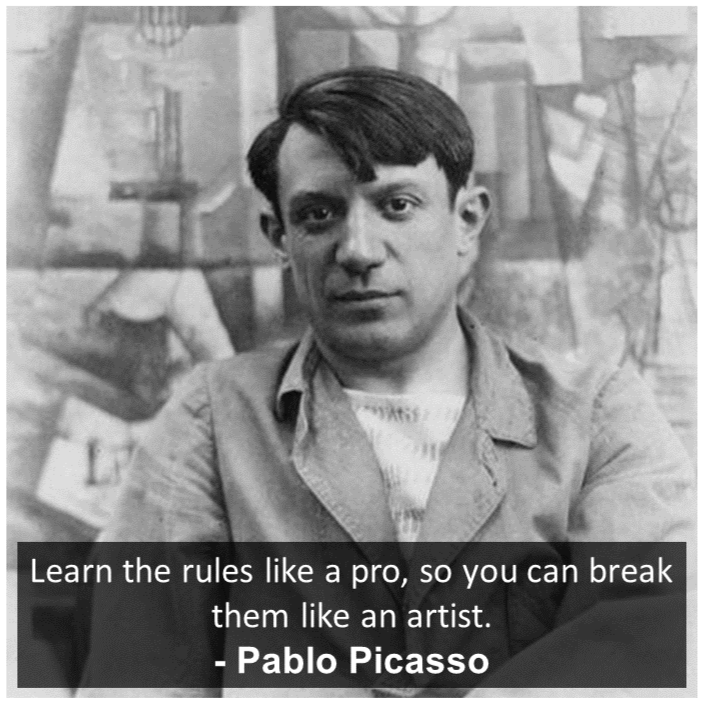Miyamoto Musashi’s philosophy for 21st century
Ever Changing Nature of The Wind
Our personality is the outcome of the surroundings, the society we live in, the people we interact with. Our family is the immediate society for us and in most cases has larger impact on our conscious and subconscious choices. The influences from our family, our friends, our heroes/ idols/ role models, the villains we hate create certain set of preferences towards everything. And when stuck in some thin situations, our preferences may become our limitations which surely make life difficult. Miyamoto-san knew this very well and hence in his Wind Book from the Book of Five Rings he tries to throw light on these ideas of obsession and liking towards certain ways of living life.
Miyamoto Musashi while discussing his ‘Way of Strategy’, ‘Way of Life’ through the Book of Five Rings makes sure that the person absorbing all his philosophy will not develop that subconscious bias, preference, liking to his philosophy. For Miyamoto-san, any type of favorite-ism, preference, polarization, liking is instant death when we are faced with the ultimate challenges in the battle of life. We have already seen his philosophy through The Ground Book, The Water Book and The Fire Book. The Wind Book is about how to not follow these ideas blindly.
The Wind Book is about the ways to actually solve the problems, especially the unconventional problems. Unconventional problems have this “unconventional” nature only because they do not fit the “traditional” patterns of our understandings and knowledge. The Wind symbolizes the change. Humanity has gone through many generations, eras to reach to the present modern stage. It is important to notice that the traditions we had before are changing according to the challenges presented to them. Even though we hold on to the traditions symbolizing their preferential nature, inherently orthodox nature but at the same time the adaptability of the same traditions to change themselves to the newer lifestyles indicates how nothing is permanent in our lives. (The word tradition itself points to that which is being done, being carried repetitively over the course of time, mostly mindlessly-mechanically) The Wind Book is about making necessary changes in our Ways of Life. The Wind Book thus demands to do that which is necessary instead of doing that which one loves especially in challenging times in life. It is about being multidisciplinary in the learning process throughout the life.
It is Miyamoto-san’s way of saying “Modern problems require modern solution.” (Apologies for the oversimplification)

“It is difficult to know yourself if you do not know others. To all ways there are side-tracks. If you study a way daily, and your spirit diverges, you may think you are obeying a Way but objectively it is not the true way. If you are following the true way and diverge a little, this will later become a large divergence.”
Miyamoto-san was very well aware that the wisdom he was trying to dispense through the Book of Five Rings is solely dependent on efforts the readers will take to implement in their own real, practical life. You will find sentences pointing to self-study, self-practice, self-realization scattered all over the book, rather in almost every paragraph he tells that “you must appreciate this”, “you must learn this on your level”, “you must understand this”. Miyamoto-san urges readers to explore his shared wisdom on their personal level. When a person starts to test and practice a part of technique on his own level without his master’s direct supervision, then there is high possibility that he will practice the technique he loves the most more and will not practice the technique which he does not like or finds difficult. This favor towards certain techniques limits the ability of the person thereby diverts him from the actual intent of the wisdom shared by his master. Many a times, when the pupil fails certain unconventional challenges even after fully practicing, he blames his master for not teaching him completely and properly. Miyamoto-san thus warns his pupil to not stick to a favorite technique, favorite philosophy. He knows that even a small preference towards a thing can drag the person completely back in the moments of challenge (just like the story of Achilles’ heel)

The Wind Book
The Wind according to Miyamoto-san refers to the traditions- the old, the present day and the family traditions. The Wind book is about picking the best from the ongoing trends and not blindly sticking to certain favorite trends. For the trends, traditions keep on changing continuously like the Wind.
“Without knowledge of the Ways of other schools, it is difficult to understand the essence of my Ichi school.”
In simple words, this is Miyamoto-san’s attempt to convince how his philosophy works by using practical and effective technique of comparison. It is his way to point out where other schools go wrong.
“That none of these are the true Way I show clearly in the interior of this book – all he vices and virtues and rights and wrongs. My Ichi school, is different. Other schools make accomplishments their means of livelihood, growing flowers and decoratively, coloring articles in order to sell them. This is definitely not the way of strategy.“
Wisdom is free from the material gains. And the wisdom of Miyamoto-san is not meant for the material gains rather it lies above all materialistic things. Even in the Ground book Miyamoto Musashi make is very clear that the real way to live a life is not about extending yourselves to some material gains, it is about discovering different possibilities the life offers and remaining open to such experiences. If you already have preferences towards certain ways of life then you won’t be able to experience the infinite possibilities of the life.
Many of us have such early preferences in our lives, especially while transitioning from the campus to professional life. Education system has further amplified such preferences. It is not imperative if one is an engineer then he/she should only follow that profession for life. There are other and many ways to discover life, this also does not mean that one should blindly follow the trend to achieve what others have achieved.
Other Schools Using Extra-Long Swords
Miyamoto-san now focuses on how certain schools, idea of combat actually has a characteristic style, preferences towards certain move, certain weapon. This preference, this characteristic style actually limits the person in completely unconventional challenges which may lead to death.
“I expect there is a case for the school in question liking extra-long sword as a part of its doctrine. But if we compare this to real life it is unreasonable.“
Those people who consider themselves the expert of long sword will fall short when they are trapped and cornered in confined spaces – where free movements become restricted. The skills they practiced hard, the skills the bound their whole lives to – here the skill of long sword fighting will be of no use. Blindly following certain technique without an intent to understand it will be fatal in life altering scenarios.
“From older times, it has been said: “Great and small go together.” So do not unconditionally dislike extra-long swords. What I dislike is the inclination towards the long sword.“
Thus Miyamoto-san again makes his point clear. He has no problem with the people teaching these techniques, he has problem with students blindly sticking to these techniques and these techniques only because these are their favorite techniques. Your enemy won’t always see you your favorite moves and attack accordingly, rather he will attack with that moves which you do not like (obviously that is why he is your enemy in the end). Too much inclination towards certain things, certain ideologies, certain, styles, ways of thinking can narrow our field of perception and create biases.
“In my doctrine, I dislike preconceived narrow spirit.“
The idea is to keep you mind open while diligently practicing certain technique, skill. A true teacher always wants his pupil to follow his teachings but also to develop his own personal style, his personal touch.
The Strong Long Sword Spirit in Other Schools
When Miyamoto-san explained how long sword can be problematic in a confined areas he is aware that a blind follower will call long sword a bad choice. That is why make it clear that it was never about the weapon, it is always about the attitude of the warrior, the intent of the warrior which is to kill the enemy. Whatever weapon you carry, whatever technique you use – do it with the intent to execute the job instead of showing off the weapon or technique.
Miyamoto-san explains that when you think of using long sword strongly your cuts will fall short and ineffective also you could not attack with lesser strength as it is already a foolish move. What you are trying to do while attacking with strength is to execute the style and weapon in a style, you want that move to happen in certain stylish way – that actually won’t kill the enemy. This gets even worse when enemy recognizes the style you are trying to demonstrate, thereby predicting your attack. Miyamoto-san calls such techniques of blindly using strength to win the battles a foolish move.
He says:
“The strongest hand wins.” has no meaning.
Even in big battles if your enemy is as strong as you, then using strength will only consume your valuable resources and there will be no favorable outcome. This is time when a warrior must think with the intent of winning instead of focusing of small details of how to execute certain style of attack on an enemy. The warrior must think in an unconventional way when strengths are equal.
“The spirit of my school is to win through the wisdom of strategy, paying no attention to trifles.”
Use of the shorter long sword in other schools
Miaymoto-san again practically explains that for big people handling big sword i.e., Tachi will be very easy and for the same reason short sword i.e.; Katana will be least preferred to them. Big people already have such preferences. Some people will think that by using the Katana – Shorter Long Sword they can stab enemy by easily jumping over unguarded enemy.

“To aim for the enemy’s unguarded movement is completely defensive and undesirable at close quarters with the enemy.“
Miyamoto-san makes it clear that even preference towards Katana s ineffective for those who think that Shorter long sword – Katana is better that the Long sword – Tachi. When a warrior will be surrounded by many enemies, he will have to sweep his Katana multiple times in fight which will be difficult when simultaneously fighting many people. He will get “entangled” with the enemy, meaning that his moves will be predictable to the other enemies around him.
“The sure way to win thus is to chase the enemy around in confusing manner, causing him to jump aside, with your body held strongly and straight. You must chase the enemy around and make him obey your spirit.“
So, Miyamoto-san says here that it is not only about executing a sword move or using either Tachi or Katana effectively in the battle. It is about confusing enemy to kill him and kill him only. Your enemy won’t fall for your technique and when he knows your technique it is already useless. You enemy will fall for the spirit of unpredictability you hold which cannot be gauged by certain techniques, styles.
Other Schools with Many Methods of Using the Long Sword
It is very interesting how Miyamoto-san in his times understood what actually urges a person to like certain move, prefer certain weapon, prefer certain style. It is because the student thinks that this is the formula, the ultimate way to dominate the enemy. He thinks that ‘this’ style he likes will bring something special out of him. He thinks that this template guarantees his victory, because following certain set of style a template calms his mind through the illusion of predictability in chaotic situations. It is only when things don’t happen the way this person expected, then he realizes the illusion of style, illusion of ‘attitude’ he was carrying with him.
That is exactly why Miyamoto Musashi explain that the best style is to follow no style. The best secret is that there is not secret. (Classic Kung Fu Panda moment)
“Attitude – No attitude“

Style brings in predictability which eases the mind of enemy and gives patterns t defeat you. By imbibing free spirit, a warrior becomes unpredictable and lethal. He dominates his enemy simply by confusing the enemy instead of using special technique, special resource or special weapon.
“Attitude is the spirit of awaiting an attack”
Attitudes are meant only when the warrior is practicing, when there is no enemy. Enemy will never wait for your style to get executed properly, rather he expects exactly opposite.
Fixing the Eyes in Other Schools
Miyamoto-san also explains how certain combat techniques teach the warrior to focus on certain parts weapons of the enemy. He knew that if the warrior only focuses on certain areas during the fight, then he eventually narrows down his vision. Narrowing vision immediately cascades into his own confusion if even a single move goes unpredictable.
“If you fix the eyes on these places your spirit can become confused and your strategy thwarted.”
In simple words, if one only focuses on certain zones, areas of the enemy he can be easily fooled of confused when enemy discovers his areas of preferences.
In modern times, we have so much raw data, information available everywhere that is has started overwhelming us. It has created those unbreakable reward cycles, short term pleasure cycles which are difficult to break. Very few amongst us are able to actually make sense of the information we are being fed continuously. Thus Miyamoto-san talks here about developing a sense of intuition, insights and understanding about the information around us. He does not want a mechanical fighting machine executing techniques seamlessly, reacting to the attack effectively; he wants a thinking warrior who can end the battle with minimum resources and minimum damage.
“When you become accustomed to something, you are not limited to the use of your eyes.”
When you perceive and feel surrounding around you, when you develop an intuition, you never react mechanically rather you react with an intent. When a seasoned musician is playing his instrument, he does not even feel the need to look at the positioning of his fingers, his limbs. He is so in-tune with the music that he can play certain improvisation even without physically looking at the instrument. That is what is the difference between seeing and perceiving.
When a warrior comes out of this mechanistic nature of styles, moves then he truly becomes visionary. He does not need physical eyes to understand the surroundings around him.
Use of the Feet in Other Schools
Miyamoto-san also talks about how a warrior should use his feet in combat. As his teachings go, there is no special way of walking to win any fight.
“In my strategy, the footwork does not change. I always walk as I usually do in the street. You must never lose control of your feet. According to the enemy’s rhythm, move fast or slowly, adjusting your body not too much and not too little.”
In simple words, if enemy notices that you are walking slow then you become predictable; you will again become predictable when enemy notices that you are running fast. So, the idea is to walk normally to demonstrate your calm spirit as if nothing is happening to you. This confuses the enemy who is so eager to understand your rhythm and attack accordingly.
Destroying the predictability in every possible sense is the idea of winning a neck-to-neck competitive game.
Speed in Other Schools
Miyamoto-san also clears one myth in combat that being fast guarantees victory.
“Speed implies that things seem fast or slow, according to whether or not they are in rhythm. Whatever the Way, the master of strategy does not appear fast.“
Whenever a warrior thinks that it is the speed that actually killed the enemy, he is wrong. It was the unpredictability, out of rhythm move that killed him. If the enemy would have been as fast as you then that same move would be useless.
Speed in every combat is always relative as Miyamoto-san goes here. He wants the warrior to be full of intent and not speedy or swift. He wants the warrior to make the attack at the right time, with full intent and with full clarity.

“Interior” and “Surface” in other Schools
Miyamoto-san exclusively wrote the Wind Book to discuss the shortcomings of having certain favorite style of fighting. On superficial level and for a normal reader, it will feel like he is trying to brag about how and why only his technique is the best technique in the whole world. But deep down when Miyamoto-san clarifies the shortcomings of the other schools and people of those schools blindly following such teachings then it becomes very clear why there is never such thing like a single formula to victory or a single weapon to defeat them all or a single style to kill an enemy. In a way Miyamoto-san actually identified the concept of Black Swan in his ancient days. There will always be something which you cannot gauge, cannot predict which will completely contradict to what your previous beliefs were before. It will challenge you to change all the previous assumptions, styles, preferences you had.

People used to think that there is no such thing as a Black Swan until they discovered one in Australia.
Hence, he instructs the readers about how to start learning something new. According to Miyamoto-san, the ways of learning are always changing like the wind, there is no style or no single style to achieve anything and everything in our lives. As a lifelong learner, you will start somewhere and build on it without having any prejudices, presumptions and keep your eyes open to everything beneficial in your knowledge building process. The idea is to start with what you like just to penetrate the topic but when you get the hold of it you must not limit it to your preferences, you should widen your perspectives to learn the new and unconventional.
“When I teach my way, I first teach by training in techniques which are easy for the pupil to understand, a doctrine which is easy to understand. I gradually endeavor to explain the deep principle, points, which it is hardly possible to comprehend, according to the pupil’s progress. In any event, because the way to understanding is through experience, I do not speak of “interior” and “gate”.“
Richard Feynman was one such person who was known such unconventional critical thinking and problem solving, Pablo Picasso who is known for creating such out of the world and unconventional perspectives through his art. These are some examples of people who truly rediscovered what their domains of expertise were.


“I could now continue by giving a specific account of these schools one by one, from the “gate” to the “interior”, but I have intentionally not named the schools or their main points. The reason for this is that different branches of schools give different interpretations of the doctrines. In as much as men’s opinion differ, so there must be differing ideas on the same matter. Thus no one man’s conception is valid for any school.“
Miyamoto-san here explains why his teachings do not include the best of all, the first of all technique to fight the battle – one-to-one or in masses. He also makes it clear that why he didn’t even number his teachings, techniques, chapters or the books. He knew that our human mind is so perceptible of the patterns, rankings, preferences in everything that it immediately develops a bias, a preference towards everything. Miyamoto Musashi’s the Wind Book thus is all about understanding the traditions, changing them by challenging the bad aspects for the ultimate gain of true wisdom. This process itself is never ending, hence it is not a job of single person or a single ideology or a single philosophy. It is very important to understand the greatness of Miyamoto-san’s teachings for being open to new ideas, being open to up-gradation/ renewal for that is how you can win over every unconventional challenge.
The true wisdom is innocent yet lethal; It is free from the biases, prejudices and preferences. A true wisdom never holds onto something, it is not mechanical rather it morphs according to the challenge presented. When the true wisdom fails to overcome the challenge presented, then it is also ready to reject its previous identity only to be born into a newer and evolved wisdom. Miyamoto Musashi’s the Wind Book is all about such continuously changing, upgrading spirit of the wisdom of life.
“You must simply keep your spirit true to realize the virtue of strategy.“
“You keep on learning and learning, and pretty soon you learn something no one has learned before.”
Richard Feynman
Links for further readings:

